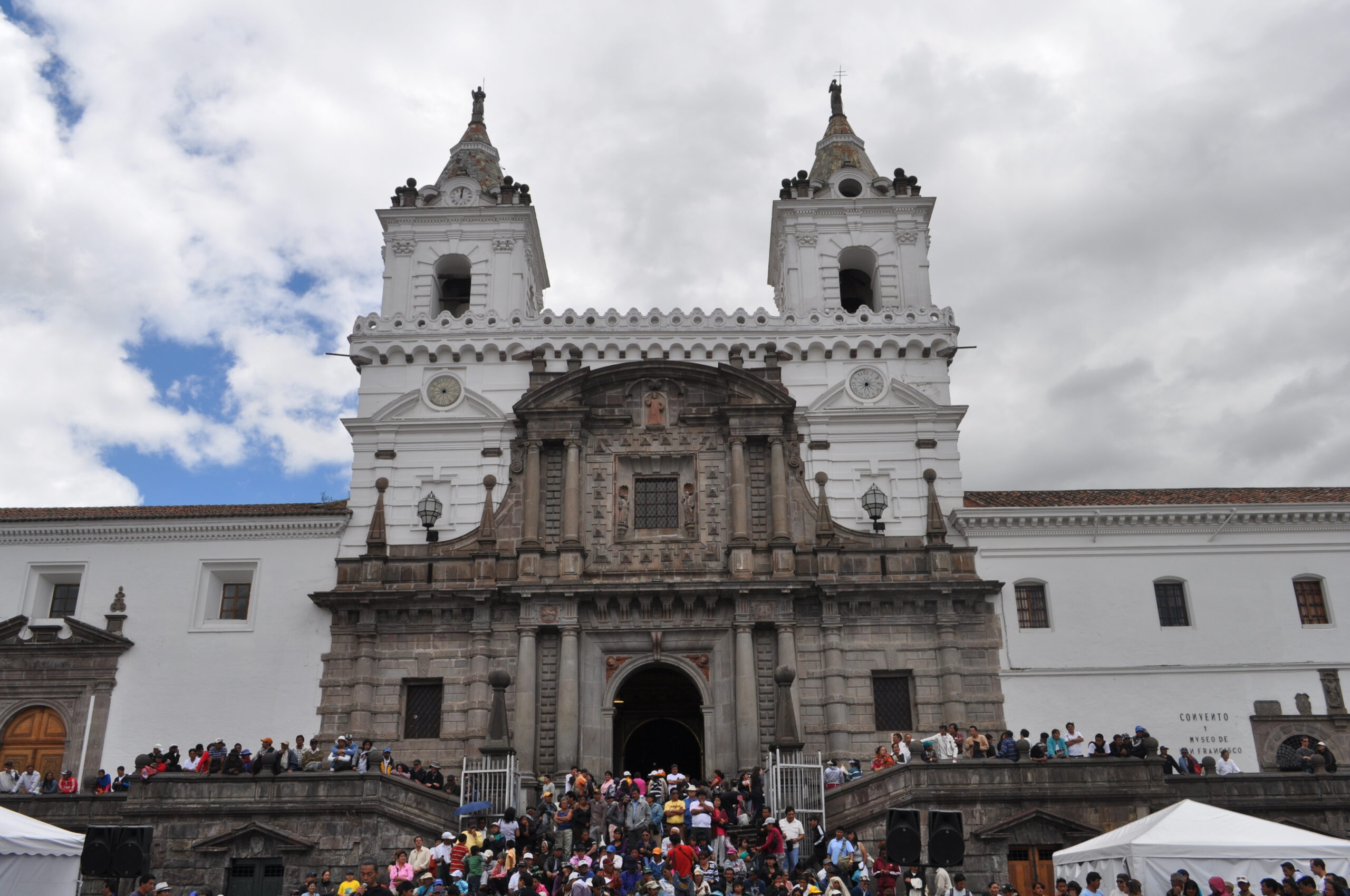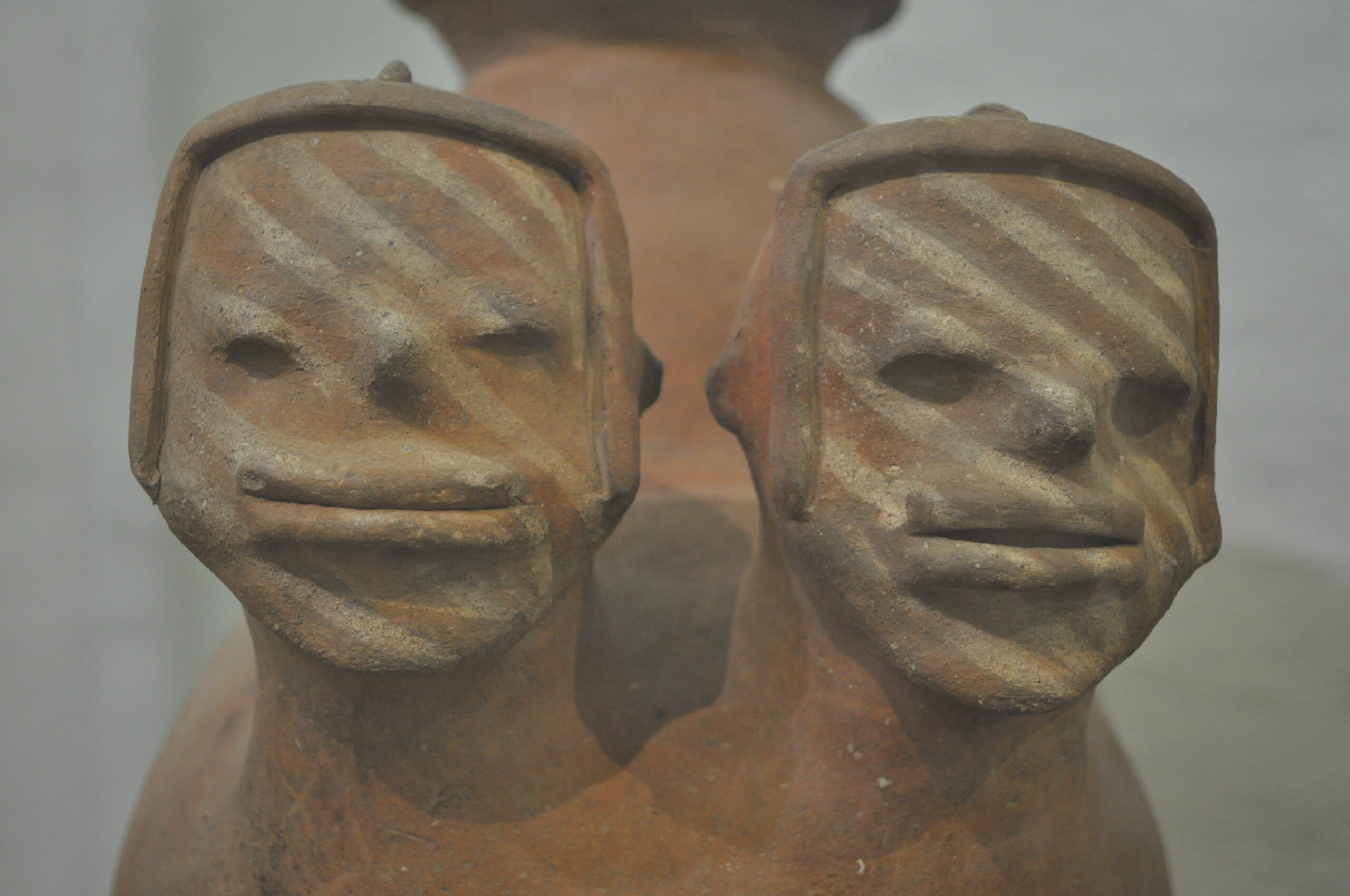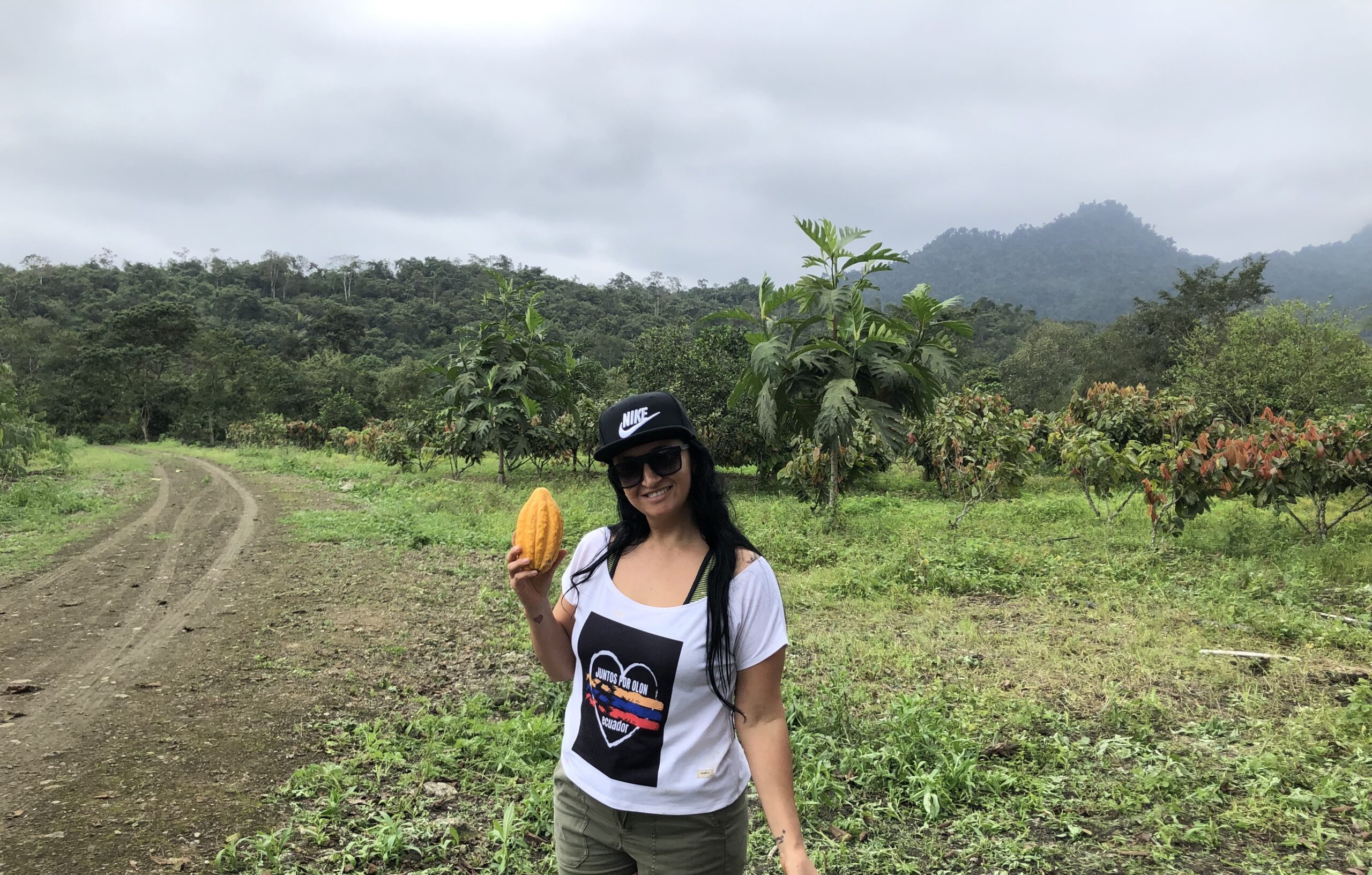5 Amazing things about Ecuador

Learn Spanish Quickly
18 August 2021
The Best Spanish and Surf Camp Retreat
15 February 2023
5 Amazing things about Ecuador You Probably Didn’t Know
Version en inglés y en español.
5 Amazing things about Ecuador You Probably Didn’t Know ?! Ecuador means "equator" in Spanish and it may not surprise you to know that the country is called this way because the equatorial line crosses it, but it is actually the only country that has been named after a geographical feature. This first fact says a lot about our country, it seems simple but actually has a beautiful complexity that makes it interesting.
For example, just a few kilometers from Quito is the monument to the middle of the world, which marks the point where the equatorial line passes. This was built many years before GPS existed and it has currently been shown that the real point is just 240 meters away, and this place where ruins of indigenous temples were found, coincidence? could they know the location long before the technology? Many will say yes...
Here we invite you to read some curious facts that complement our history and traditions:
5 Amazing things about Ecuador
1) Ecuador is the closest country to space.
We should have a space base! Many people think the closest point on Earth to space would be Mount Everest, but that is wrong. Recent studies shown that because the Earth is not a perfect sphere and rotation, it bulges slightly at the equator.
The bulge is big enough that Mount Chimborazo in Ecuador is actually 1.5 miles “higher” than Mount Everest.
2) The Panama hat is Ecuadorian
According to Wikipedia, although it is commonly called "Panama hat" in English, the hat has its origin in Ecuador.
When the Spanish conquistadors arrived in Ecuador in 1526, the locals wore this hat made with palm tree fibers. Later, Some people wanted to export them in the 19th and early 20th centuries.
In order to do that, they had to pass through the isthmus of Panama before sailing to their destinations in Asia, the rest of America and Europe, that is where they acquired their name. Manuel Alfaro (Ecuadorian businessman) set up a Panama hat business that grew during the construction of the Panama Canal, due to its resistant quality and light material for the workers. Later, in 1906, U.S. President Theodore Roosevelt visited the Panama Canal construction site and was photographed wearing a Panama hat, where his international fame began.
3) The Galapagos Islands inspired Darwin´s evolutionary theories
Darwin was fascinated by how life had come to this remote volcanic archipelago, which he described as "a little world within itself" because of its geographic isolation, and by the variety of different species he found there.
The animals, observation time and studies that Darwin encountered in the Galapagos would help to underpin his theory of evolution by natural selection: "a general law, leading to the progress of all organic beings, namely, multiply, vary, let the strongest live and the weakest die," as he wrote in the famous On the Origin of Species.
4) Ecuador might even be the original source of cacao.
Ecuadorian chocolates have received global awards and recognition for fine quality over recent years.
However, Ecuador truly benefited from the cocoa boom of the mid 1800s. At that time Ecuador was the world’s largest producer of cocoa (known as cacao), and cocoa beans were the country’s most important export. In 1916 Ecuador’s cocoa crop was hit by a fungal plague that devastated plantations for years to come. Nowadays, Ecuadorian chocolate is flourishing again but focusing on quality over quantity.
Regarding its origins botanical evidence shows the plant from which chocolate is made was first grown for food more than 5,000 years ago in the Amazon rainforest.
Chemical residues found on ancient pottery suggest cocoa was used as a food, drink or medicine by indigenous people living in what is now Ecuador.
Our school sponsors and supports an organic cocoa farming project through the Juntos por Olón association.
5) Ecuador is a country of orchids and birds
Ecuador is known as a mega diverse country, due to its privileged location, unique climatic and geographical conditions allow the perfect scenario for the growth of plants. It has more than 4,000 species of orchids, it is also one of the main producers of roses and sunflowers, approximately 400 varieties of roses.
Ecuador is a birdwatcher paradise; it has more birds per square kilometer than anywhere else in the world. With 1632 different confirmed species and 48 more hypothetical, there are plenty of feathers to flap.
Here you can also download 5 Facts of Ecuador that you might not know (version pdf in Spanish with exercises to practice)
Planning your trip to Ecuador?
I hope you found these facts about Ecuador interesting; we love to share our culture, history and language with you, and also give you some inspiration for things to do and interesting places to visit.
What do you need to visit Ecuador?
Just a passport and the desire to have fun (no visa required).
What do I recommend to better enjoy this experience?
Learning Spanish will open doors for you, and I can help you with that, we have certified instructor with experience teaching the language.
Additionally, I am super proud and happy to announce our new website; I would love for you to visit and recommend to all those who want to start a new adventure... traveling in South America!
Version en español para practicar tu español!
Ecuador significa "ecuador" en español y puede que no te sorprenda saber que se llama así porque la línea ecuatorial lo atraviesa, pero en realidad es el único país en el mundo que ha sido nombrado así por un accidente geográfico. Este primer dato dice mucho de nuestro hermoso país, parece sencillo pero en realidad tiene una hermosa complejidad que lo hace interesante. Por ejemplo, a solo unos kilometros de Quito se encuentra el monumento a la mitad del mundo, que marca el punto donde pasa la linea ecuatorial, este fue construido muchos años antes que existiera el GPS y actualmente se ha demostrado que el punto real se encuentra a tan solo 240 metros, y este lugar donde se encontraron ruinas de templos indigenas, coincidencia? podían ellos saber la localización mucho antes de la tecnología? muchos dirán que si... Interesante? aquí les invito a leer algunos datos curiosos que complementan nuestra historia y tradiciones:
- Ecuador es el país más cercano al espacio.
¡Deberíamos tener una base espacial! Mucha gente piensa que el punto de la Tierra más cercano al espacio sería el Monte Everest, pero eso es erróneo. Estudios recientes han demostrado que, debido a que la Tierra no es una esfera perfecta y también a la rotación, se abomba ligeramente en el ecuador. La protuberancia es lo suficientemente grande como para que el monte Chimborazo, en Ecuador, sea en realidad 1,5 millas "más alto" que el monte Everest.
- El sombrero de Panamá es ecuatoriano
Según Wikipedia, aunque en inglés se le llama comúnmente "Panama hat", el sombrero tiene su origen en Ecuador. Cuando los conquistadores españoles llegaron a Ecuador en 1526, los lugareños llevaban este sombrero hecho con fibras de palmera. Más tarde, los quisieron exportar en el siglo XIX y principios del XX pero tuvieron que pasar por el istmo de Panamá antes de zarpar hacia sus destinos en Asia, el resto de América y Europa, es allí donde adquirieron su nombre. Manuel Alfaro (empresario ecuatoriano) montó un negocio de sombreros panamá que creció durante la construcción del Canal de Panamá, debido a su calidad resistente y material ligero para los trabajadores. Más tarde, en 1906, el presidente de EE.UU. Theodore Roosevelt visitó las obras del Canal de Panamá y fue fotografiado con un sombrero panamá, donde comenzó su fama internacional.
- Las Islas Galapagos inspiraron las teorías de la evolución de Darwin
A Darwin le fascinaba cómo había llegado la vida a este remoto archipiélago volcánico, que describió como "un pequeño mundo dentro de sí mismo", debido a su aislamiento geográfico, y la variedad de especies distintas que encontró allí.
Los animales, el tiempo de observación y los estudios que Darwin encontró en las Galápagos ayudarían a fundamentar su teoría de la evolución por selección natural: "una ley general, que conduce al progreso de todos los seres orgánicos, a saber, multiplicarse, variar, dejar que el más fuerte viva y el más débil muera", como escribió en el famoso Sobre el origen de las especies.
- El chocolate se podría haber originado en Ecuador
En los últimos años, los chocolates ecuatorianos han recibido premios y reconocimientos mundiales por su excelente calidad.
Sin embargo, Ecuador se benefició realmente del auge del cacao a mediados del siglo XIX. En aquella época, Ecuador era el mayor productor mundial de cacao, y las habas de cacao eran el producto de exportación más importante del país. En 1916, la cosecha de cacao de Ecuador se vio afectada por una plaga de hongos que devastó las plantaciones durante años. Hoy en día, el chocolate ecuatoriano está floreciendo de nuevo, pero centrándose en la calidad por encima de la cantidad.
En cuanto a sus orígenes, las pruebas botánicas demuestran que la planta con la que se elabora el chocolate se cultivó por primera vez como alimento hace más de 5.000 años en la selva amazónica.
Los residuos químicos hallados en cerámicas antiguas sugieren que los indígenas de lo que hoy es Ecuador utilizaban el cacao como alimento, bebida o medicina.
- Ecuador es un país de orquídeas y aves.
Ecuador es conocido como un país mega diverso, debido a su privilegiada ubicación, condiciones climáticas y geográficas únicas permiten el escenario perfecto para el crecimiento de las plantas. Cuenta con más de 4.000 especies de orquídeas, también es uno de los principales productores de rosas y girasoles, aproximadamente 400 variedades de rosas.
Ecuador es un paraíso para los observadores de aves, tiene más aves por kilómetro cuadrado que cualquier otro lugar del mundo. Con 1632 especies diferentes confirmadas y 48 más hipotéticas, hay muchas plumas que agitar.
Planeando tu viaje a Ecuador?
Espero que estos datos sobre Ecuador te hayan parecido interesantes, nos encanta compartir nuestra cultura, historia e idioma contigo, y además darte un poco de inspiración para algunas cosas que hacer y lugares interesantes que visitar.
Qué necesitas para visitar Ecuador?
Solo un pasaporte y la ganas de divertirte (no visa necesaria)
Qué te recomiendo para disfrutar mejor esta experiencia?
Aprender español te abrirá las puertas y en eso puedo ayudarte, tenemos una nueva pagina web que me encantaría que visites y recomiendes a todos aquellos que tengan ganas de iniciar una nueva aventura.. viajando en Sudamérica.





